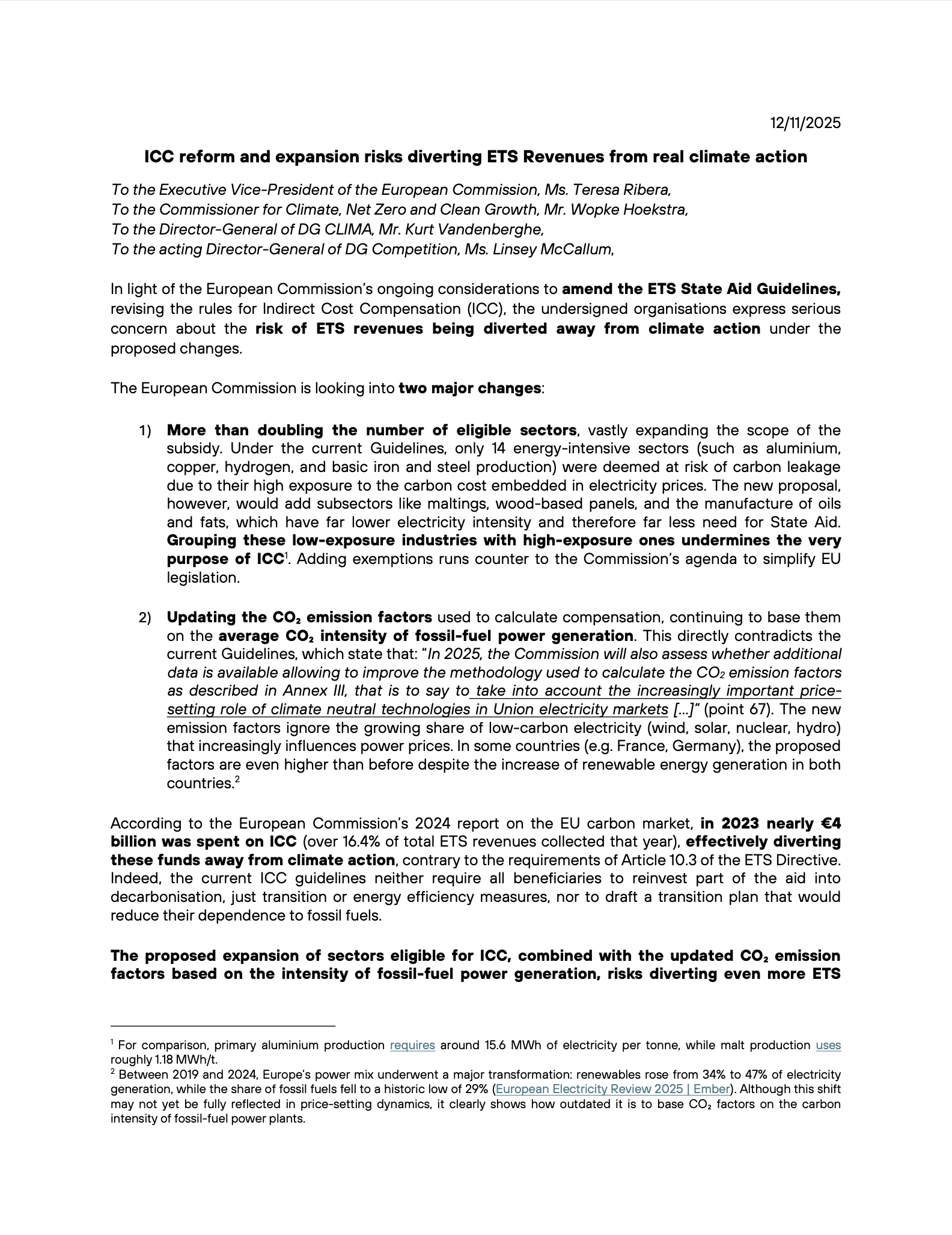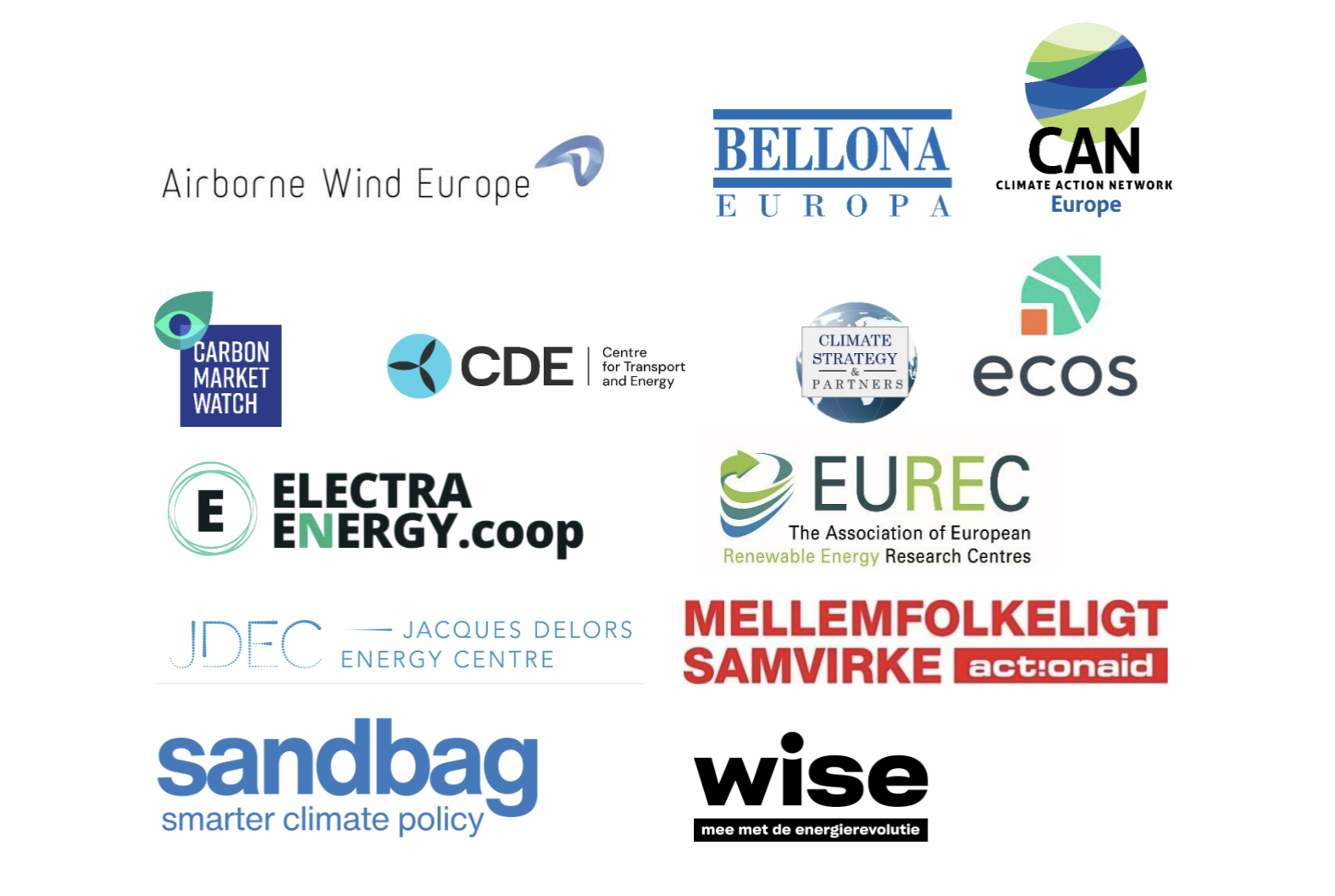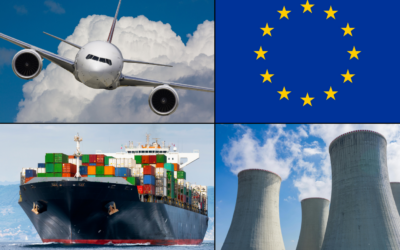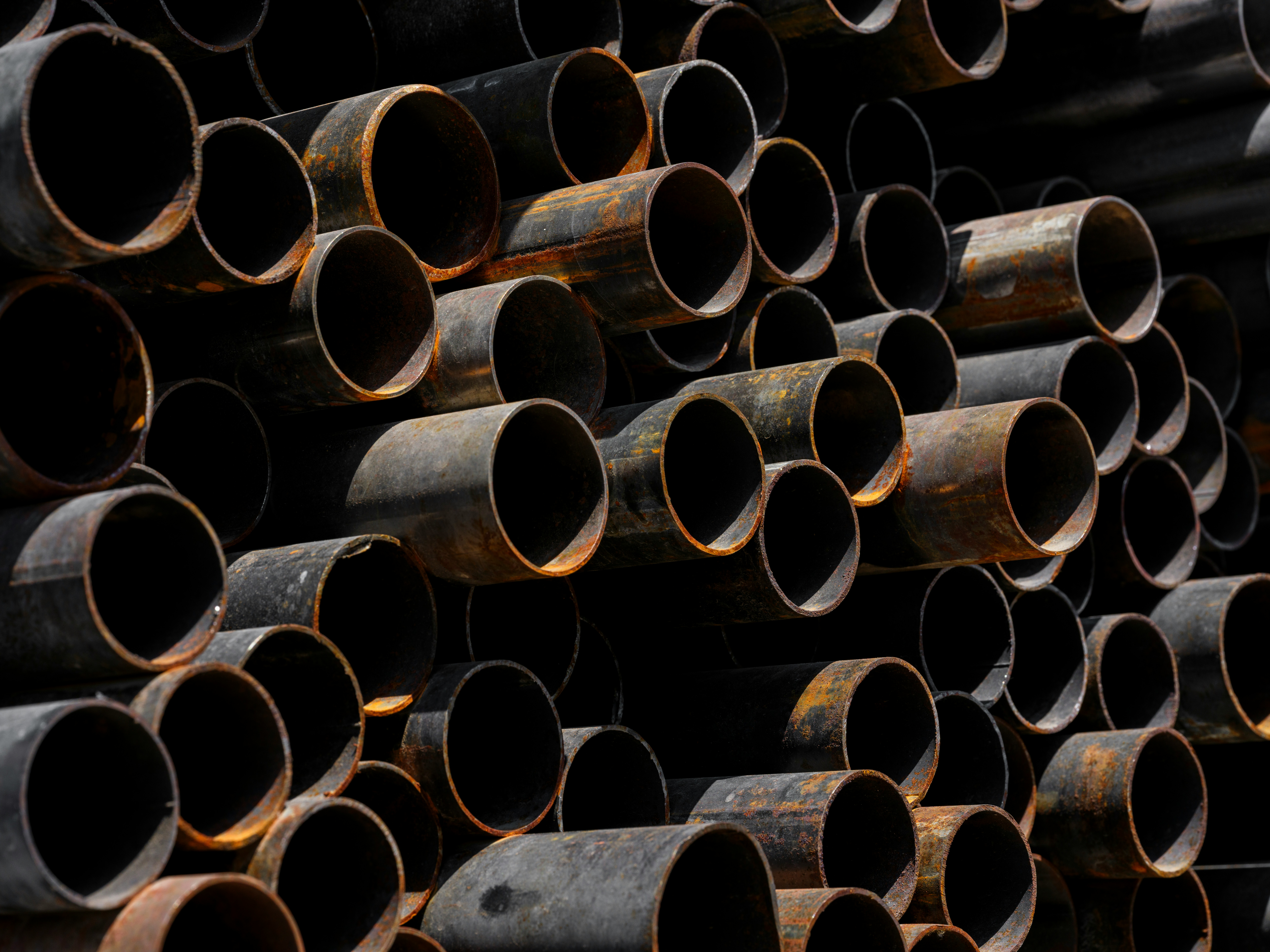Sandbag joins 14 NGOs in calling on the European Commission to reform the Indirect Cost Compensation (ICC) scheme before expanding it.
ETS revenues must support real decarbonisation, not fossil-based subsidies.

In light of the European Commission’s ongoing considerations to amend the ETS State Aid Guidelines, revising the rules for Indirect Cost Compensation (ICC), the undersigned organisations express serious concern about the risk of ETS revenues being diverted away from climate action under the proposed changes.
The European Commission is looking into two major changes:
1) More than doubling the number of eligible sectors, vastly expanding the scope of the subsidy. Under the current Guidelines, only 14 energy-intensive sectors (such as aluminium, copper, hydrogen, and basic iron and steel production) were deemed at risk of carbon leakage due to their high exposure to the carbon cost embedded in electricity prices. The new proposal, however, would add subsectors like maltings, wood-based panels, and the manufacture of oils and fats, which have far lower electricity intensity and therefore far less need for State Aid. Grouping these low-exposure industries with high-exposure ones undermines the very purpose of ICC1. Adding exemptions runs counter to the Commission’s agenda to simplify EU legislation.
2) Updating the CO₂ emission factors used to calculate compensation, continuing to base them on the average CO₂ intensity of fossil-fuel power generation. This directly contradicts the current Guidelines, which state that: “In 2025, the Commission will also assess whether additional data is available allowing to improve the methodology used to calculate the CO2 emission factors as described in Annex III, that is to say to take into account the increasingly important price-setting role of climate neutral technologies in Union electricity markets […]” (point 67). The new emission factors ignore the growing share of low-carbon electricity (wind, solar, nuclear, hydro) that increasingly influences power prices. In some countries (e.g. France, Germany), the proposed factors are even higher than before despite the increase of renewable energy generation in both countries.
According to the European Commission’s 2024 report on the EU carbon market, in 2023 nearly €4 billion was spent on ICC (over 16.4% of total ETS revenues collected that year), effectively diverting these funds away from climate action, contrary to the requirements of Article 10.3 of the ETS Directive. Indeed, the current ICC guidelines neither require all beneficiaries to reinvest part of the aid into decarbonisation, just transition or energy efficiency measures, nor to draft a transition plan that would reduce their dependence to fossil fuels.
The proposed expansion of sectors eligible for ICC, combined with the updated CO₂ emission factors based on the intensity of fossil-fuel power generation, risks diverting even more ETS revenues into subsidies, actively taking funds away from climate solutions (like renewables, grid upgrades, energy efficiency, and flexibility measures) that address the root of the problem.
Consequently, the undersigned call on the European Commission to:
• Refrain from the expansion of eligible sectors under the Guidelines, at least until the current system of ICC has been adequately reformed.
• Update CO₂ emission factors to reflect the average annual marginal emission intensity of the price-setting generation units in the bidding zone, based on real market data rather than the average of all fossil power plants.
These steps are essential to prevent ETS revenues from being misdirected and to unlock their full potential as a driver of decarbonisation, helping the EU achieve its climate goals.
Organisation’s signatures (in alphabetical order):

Related publications
The EU ETS at a Crossroads
Sandbag’s latest submission to the EU ETS and Innovation Fund consultation calls for clearer rules on free allocation, stronger criteria for funding innovation, and safeguards against misleading carbon accounting practices.
In or Out: What’s best for carbon removals and the EU ETS?
What will the future of the EU Emissions Trading System (ETS) look like as the emissions cap heads towards zero? Is integrating carbon dioxide removals (CDRs) into the ETS a solution to help the EU achieve its climate goals? Or would they compromise the integrity and functioning of the system? These questions are at the forefront of the Commission’s mind as they review different options for the future of the ETS ahead of the 2026 revision.
A closer look at 2023 emissions: steelmaking caused a quarter of industry pollution
This brief analyses 2023 emissions under the EU Emissions Trading System (EU ETS), using the latest data available from the EU Transaction Log (EUTL) . It particularly focuses on the iron and steel sector.



